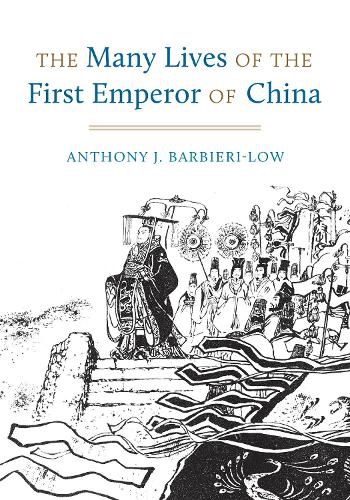Readings Newsletter
Become a Readings Member to make your shopping experience even easier.
Sign in or sign up for free!
You’re not far away from qualifying for FREE standard shipping within Australia
You’ve qualified for FREE standard shipping within Australia
The cart is loading…






Ying Zheng, founder of the Qin empire, is recognized as a pivotal figure in world history, alongside other notable conquerors such as Alexander the Great, Genghis Khan, and Julius Caesar. His accomplishments include conquest of the warring states of ancient China, creation of an imperial system that endured for two millennia, and unification of Chinese culture through the promotion of a single writing system.
Only one biased historical account, written a century after his death, narrates his biography. Recently, however, archaeologists have revealed the lavish pits associated with his tomb and documents that demonstrate how his dynasty functioned. Debates about the First Emperor have raged since shortly after his demise, making him an ideological slate upon which politicians, revolutionaries, poets, painters, archaeologists, and movie directors have written their own biases, fears, and fantasies.
This book is neither a standard biography nor a dynastic history. Rather, it looks historically at interpretations of the First Emperor in history, literature, archaeology, and popular culture as a way to understand the interpreters as much as the subject of their interpretation.
$9.00 standard shipping within Australia
FREE standard shipping within Australia for orders over $100.00
Express & International shipping calculated at checkout
Ying Zheng, founder of the Qin empire, is recognized as a pivotal figure in world history, alongside other notable conquerors such as Alexander the Great, Genghis Khan, and Julius Caesar. His accomplishments include conquest of the warring states of ancient China, creation of an imperial system that endured for two millennia, and unification of Chinese culture through the promotion of a single writing system.
Only one biased historical account, written a century after his death, narrates his biography. Recently, however, archaeologists have revealed the lavish pits associated with his tomb and documents that demonstrate how his dynasty functioned. Debates about the First Emperor have raged since shortly after his demise, making him an ideological slate upon which politicians, revolutionaries, poets, painters, archaeologists, and movie directors have written their own biases, fears, and fantasies.
This book is neither a standard biography nor a dynastic history. Rather, it looks historically at interpretations of the First Emperor in history, literature, archaeology, and popular culture as a way to understand the interpreters as much as the subject of their interpretation.